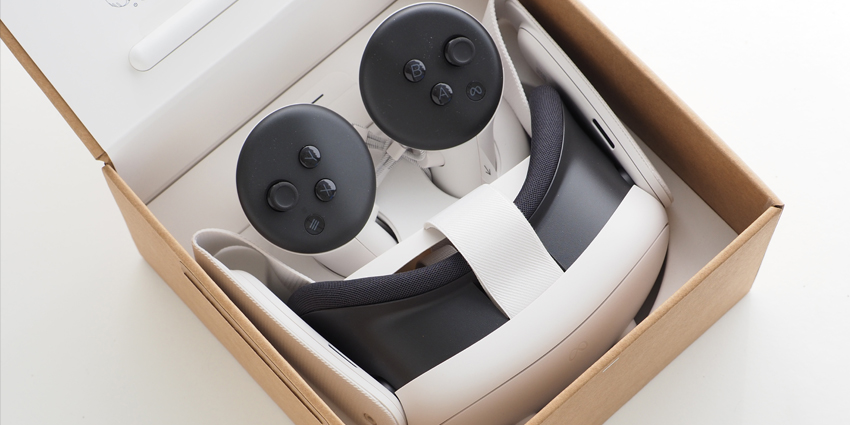Virtual Reality is one of the most exciting new technologies to arrive in the current world. Although VR solutions have been around for some time now, the technology is experiencing a rapid boost in growth. By 2026, experts say that VR will be worth around $184.66 billion, representing a 48.7% growth rate per year since 2020.
So, why is VR evolving so rapidly? The immersive environment of VR provides a range of benefits to consumers and businesses alike. VR can offer better training opportunities to people in complex environments, like the military, or healthcare. Virtual Reality also has the power to boost collaboration experience with remote workers.
Perhaps most crucially of all, VR could be the key to transforming the way we interact with customers and provide meaningful experiences in the CX landscape.
Using VR to Connect with Customers
The role of VR as a tool for customer experience has earned additional attention since 2020, when the pandemic changed the way teams and employees interact. During the pandemic, many retailers and companies had to shut their doors to the public, to keep people safe. Though this was a highly disruptive experience for most brands, it also unveiled new opportunities for digital engagement.
Today’s customers appreciate the convenience and versatility of digital experiences when interacting with brands. People want to shop online, research products on the web, and connect with service teams through various digital platforms.
VR could be the next step in this digital CX revolution. With VR, companies can create unique customer experiences that allow clients to interact with products and solutions before making a purchase. VR also opens the door for new levels of customer support and service. Surveys show that around 84% of stakeholders are already looking into VR CX initiatives.
Benefits of VR in CX include:
1. Helping Customers Make Informed Decisions
The way customers shop has been changing on a massive scale for the last few years. The digital environment means that we do much of our shopping online these days. However, there are some parts of the shopping experience that are hard to replicate in a digital environment. It’s difficult to try on a new outfit or imagine what a kitchen might look like when browsing a website.
VR introduces a new kind of shopping experience, intended to help customers make better decisions. You can step into a virtual fitting room and try on a new dress before spending any money. Companies like Ikea also allow users to build their own virtual kitchens to imagine what their finished project will look like.
2. Differentiating Brands
VR also has the potential to differentiate brands and help them stand out from the competition. Today, the decisions clients make about who to buy from are often based on the experience they can expect from a specific company. VR allows for an immersive experience where consumers can interact with people and items as if they were standing in a store.
The use of immersive experiences improves your chances of turning customers into loyal advocates, by helping to build a relationship between your company and your clients. VR gives customers a highly realistic experience which we can relate to on an emotional level. Marketers can develop thrilling and exhilarating VR interactions, and these lead to stronger connections between brands and their target audience.
3. Reduced Buyer’s Remorse
Virtual reality could tackle the problem of buyer’s remorse once and for all, in both the B2B and B2C environment. A great customer experience requires your customer to feel as though they’re getting the right amount of value for their money. The ability to try items on before you buy them and test the performance of different equipment in virtual reality can reduce the risk of buyer’s remorse.
Companies from virtually every industry can use VR to minimize the risk of bad experiences for their clients, and thus reduce negative reviews too. Travel agents can allow users to check out a location before booking a trip. Automobile manufacturers have the option to place their customers inside a car for a “virtual” test drive. The options are endless.
4. Better Post-Sales Customer Service
Customer service departments are going through a rapid period of evolution, particularly, following the pandemic of 2020. Companies now need to work harder than ever to serve their clients in a digital environment. This has led to the rise of chatbots, virtual assistants, and self-service tools, but also to the use of VR in post-purchase support too.
In a VR environment, companies can send engineers to interact with customers, and show them how to fix common problems, without asking them to wait for a physical call-out. Virtual Reality demonstrations can show users how to set up new technology, and onboard them into the platform without the need for a human agent. VR systems can even help with things like troubleshooting common problems, as a replacement for the standard instruction manual.
5. Opportunities for Customer Success
Aside from simply helping customers deal with problems that may arise after they purchase a product or service, a VR solution can also improve the chances of your customers getting the best possible results from their investment. Companies can build training experiences within VR which show users how to access the most valuable features of a new piece of equipment in exciting ways.
In the B2B environment, this means that companies can quickly train employees on how to use new pieces of tech, without having to ask for help from the vendor. In the B2C environment, it means that businesses can provide their consumers with an exciting insight into what they can accomplish with their new purchase.
Virtual Customer Experience
Creating powerful, meaningful, and thoughtful customer experiences is the most important thing that any business can do in the current landscape. The VR environment could present a new opportunity to companies keen to connect with their clients on a deeper level – particularly in a post-pandemic environment.







